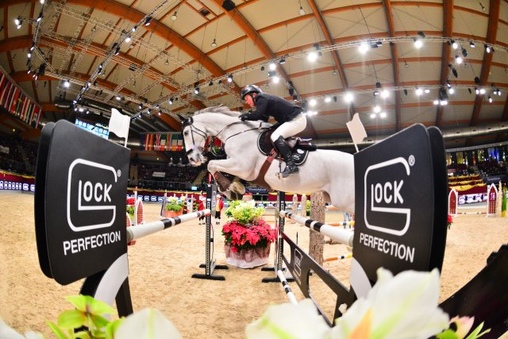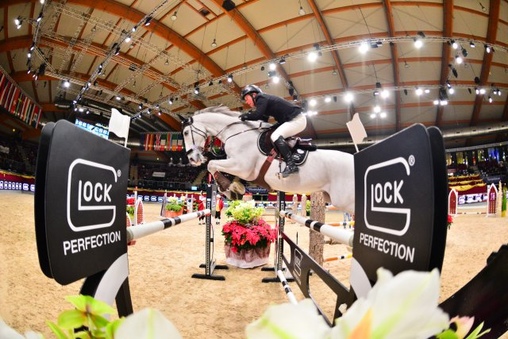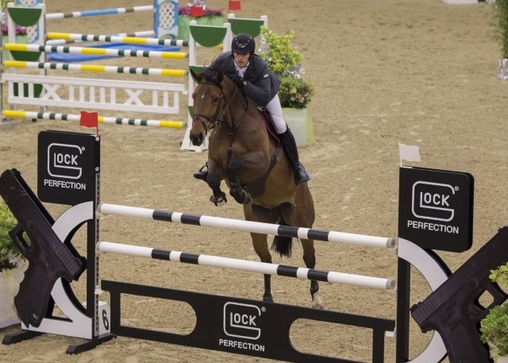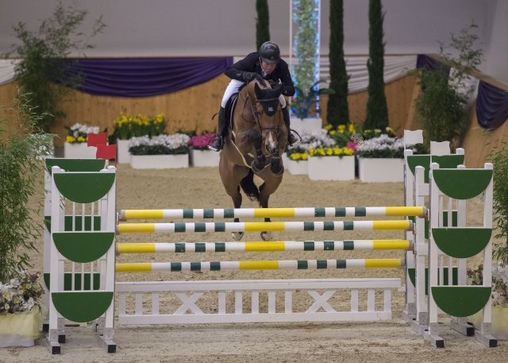 Wednesday, 18 January 2017 CSI3* CSI1* CSIYH1* GLOCK HORSE PERFORMANCE CENTER
Wednesday, 18 January 2017 CSI3* CSI1* CSIYH1* GLOCK HORSE PERFORMANCE CENTEROxer, upright, triple-bar – things that make show jumping so special
The delight of show jumping. There’s scarcely any other equestrian sport worldwide that holds so many fans under its spell as the art of riding over the jumps. Whether it’s indoor arenas, on small sand areas or gigantic stretches of turf, spectators come and join in the excitement. But what is it that makes this discipline of sport so special actually and what obstacles literally have to be overcome?
Learning to fly together
That symbiosis between horse and rider, together overcoming challenging obstacles, and the overwhelming emotions after victories and defeats; together these define the attraction of equestrian show jumping. Many top riders train their horses right from scratch, treading a long path marked out by disciplined work, continuous development and overwhelming trust. Because it is only when the foundations are right that those four-legged athletes can consistently triumph on the world’s most difficult courses. The tasks required of both riders and horses in this context are as diverse as they are difficult.
Technical challenges, visual highlights
Every event and every riding arena presents a fresh new challenge for even the best in the world. Widely differing scales, ground conditions and other circumstances demand know-how, feeling and intuition of the contestants.
Contestants are often seen discussing whether to stretch of conserve the stride. Because horses have different strides in canter, so one needs to know whether to save a canter stride and stretch or let the horse take one more and correspondingly conserve their extent.
Obstacles in the course come in all shapes, colours and designs: lofty vertical jumps in which it is all about height. Mighty oxers, demanding in height and width, as well as the ultimate jump in this respect, the triple bar. Obviously also visual handicaps are considered. A rider must be able to assess what could possibly draw their horse’s attention and unsettle it. Colours are less important than the architecture of an obstacle. Horses have difficulty gauging white bars, while lofty jumps with few bars or unusual forms sometimes lead to the horses shying.
However, not only riders contribute to success on the course. The course designers have an enormous responsibility here, because ultimately they decide on distances, lines and obstacle constellation on the course. They need to know their riders and horses exceptionally well and, in the ideal case, will prepare them perfectly in the course of the tournament from the opening tests to the great finales.
Equal heights, yet differences in difficulty
The degree of difficulty is defined by the category of the event and the classification of tests. Thus a show-jumping test over 1.45 metres in the context of a CSI2* tournament must be planned out differently from a test over the same height in the context of a five-star-event. The latter therefore need to be set more difficult for the same height. For all tests the following applies: an ideal course should not only be visually and technically attractive and manageable for riders and horses but also offer as high a degree of suspense as possible for spectators.
INFOBOX
What: International Show Jumping
When: 02-05/02/2017
Where: GLOCK HORSE PERFORMANCE CENTER Austria
VIP day tickets: call +43 664 887 344 01
Free entry to all competitive events on the spectator grandstand in the tournament hall
www.ghpc.at

Mighty oxers are part of daily routine in show jumping and demand lots of teamwork from both rider and horse. © im|press|ions – Daniel Kaiser

Ready for take off! Uprights mean steep ascents. © Nini Schäbel

In this picture, GLOCK Rider Gerco Schröder and GLOCK’s Debalia fly over a triple-bar which, as the name suggests, consists of three elements and is therefore a rather long jump. © Nini Schäbel
